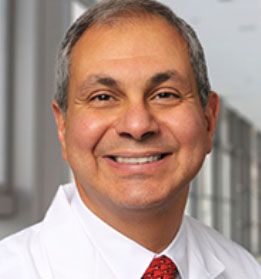Search results
Author(s):
William T Abraham
,
Adam Pleister
,
Robin Germany
Added:
3 years ago
Central sleep apnoea (CSA) occurs in approximately one-third of patients with HF and is associated with a significant increase in morbidity and mortality compared to HF patients without CSA.1–3 CSA results in intermittent hypoxia and activation of the renin–angiotensin system, which contributes to worsening HF.4 Symptoms such as fatigue and difficulty concentrating often overlap with the effects…
View more
Sleep-Disordered Breathing During Congestive Heart Failure: To Intervene or Not to Intervene?
Author(s):
Ali Valika
,
Maria Rosa Costanzo
Added:
3 years ago
Article
Author(s):
Ali Vazir
,
Kostantinos Bronis
,
Simon G Pearse
Added:
3 years ago
Central sleep apnoea (CSA) is characterised by cycles of apnoea, hypopnoea and hyperpnoea during sleep due to abnormalities in the regulation of breathing within the respiratory centre in the brainstem. CSA, defined as an apnoea–hypopnoea index (AHI) of ≥15 events/h, is common in patients with heart failure (HF), with a prevalence of 20–45 %.1, 2 Its presence is reported to be a marker of…
View more
William T Abraham
Research Area(s) / Expertise:
Job title: Professor of Internal Medicine and Chief of the Division of Cardiovascular Medicine
Author
Author(s):
Martin R Cowie
,
Holger Woehrle
,
Olaf Oldenburg
,
et al
Added:
3 years ago
Heart Failure
In developed countries, approximately 1–2 % of the adult population has heart failure (HF), and the prevalence of this cardiovascular disease increases with age.1,2 HF can occur in the presence or absence of reduced left ventricular ejection fraction (LVEF), known as HF with reduced ejection fraction (HF-rEF) and HF with preserved ejection fraction (HF-pEF), respectively. The most…
View more
Author(s):
Douglas Bradley
Added:
1 year ago
ESC 22 - In this short interview filmed onsite at ESC Congress 2022, Dr Douglas Bradley (University of Toronto, Toronto, CA) discusses the findings of the ADVENT-HF Trial (NCT01128816).
ADVENT-HF was designed to determine if a respiratory device, Adaptive Servo Ventilation can reduce the risk of cardiovascular hospitalisations and death in patients with heart failure and sleep apnoea. 732…
View more
Foreword
Author(s):
Andrew JS Coats
,
Giuseppe Rosano
Added:
3 years ago
Article
Author(s):
Nadja Scherbakov
,
Wolfram Doehner
Added:
3 years ago
Heart failure (HF) is a complex clinical syndrome with more than 15 million diagnosed cases worldwide.1,2 Characterised by structural or functional impairment of ventricular filling or ejection fraction (EF)3, HF is frequently accompanied by multiple comorbidities. Brain disorders, including stroke, mental disturbances and cognitive impairment are distinct from the comorbidities traditionally…
View more
Author(s):
Frans H Rutten
,
Joe Gallagher
Added:
3 years ago
“I cannot keep pace with my husband. Is it simply ageing, overweight and my sedentary lifestyle?” This is a common encounter in primary care, bearing in mind that around 16 % of older community-dwelling people experience at least grade 3 shortness of breath according to the Medical Research Council questionnaire (“walk slower than people of the same age because of breathlessness or have to stop…
View more
Author(s):
Justien Cornelis
,
Jonathan Myers
,
Hein Heidbuchel
,
et al
Added:
3 years ago
A hallmark symptom of chronic heart failure (CHF) is exercise intolerance associated with early fatigue and/or dyspnoea with a minimal degree of exertion. It is also associated with a decline in capacity to perform activities of daily living and a diminished quality of life (QoL). Both patients with heart failure with reduced left ventricular ejection fraction (HFrEF) and those with heart failure…
View more












